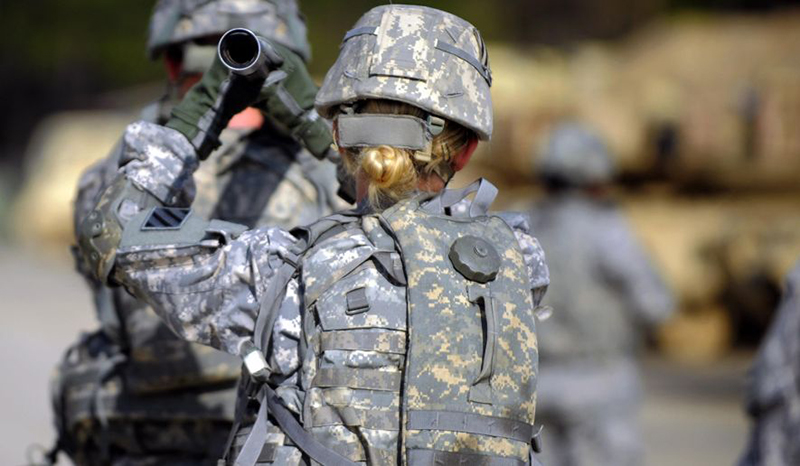
In a new paper* published in the Journal of Traumatic Stress, Institute for Behavioral Health researchers Rachel Sayko Adams and Mary Jo Larson reveal their findings on the consequences of combat exposure on U.S. Army women who have returned home from deployment. Heller communications talked with Adams and Larson about the research, which included the largest representative survey of deployed women ever studied. You can read more about the study in this blog post.
We know from previous studies that combat exposure leads to increased likelihood of PTSD in men. Was that you expectation for women?
We expected that, like male military members, combat exposure would increase the likelihood of women screening positive for PTSD after deployment; however, we were surprised at the large increase in odds. For instance, women who reported three or more types of combat exposure had over 20 times the odds of screening positive for PTSD compared to women with no combat exposure.
This was the largest representative sample of deployed women ever studied. How did you go about collecting the information?
With funding from the National Institute on Drug Abuse, and sponsorship from the Department of Defense's (DoD) Defense Health Agency (DHA), we created the Substance Use and Psychological Injury Combat Study (SUPIC), a cohort of all Army military members who returned from deployments to Operation Enduring Freedom and Operation Iraqi Freedom (OEF/OIF) in fiscal years 2008-2011. We merged together deployment records, administrative health care utilization data and postdeployment health surveillance information, allowing us to look at outcomes up to three years postdeployment, including the ability to track SUPIC members into the Veterans Health Administration.
This paper focused on screening results from the DoD's postdeployment health assessment completed at the end of OEF/OIF deployments. Because our SUPIC cohort includes nearly all Army members returning from a deployment, rather than one brigade or smaller sample, we have a large sample of women Army members for our analyses.
What impact do you hope this study will have on how the military approaches and responds to the issue?
Our study examines data from a period prior to recent DoD policy changes that allow qualified women to hold direct combat positions. Not surprisingly, women who have experienced combat during deployments to combat zones have negative behavioral health outcomes associated with these combat exposures. This suggests that the DoD should increase efforts to prepare all women military members for exposure to combat-related stressors while deployed—not only those who are formally assigned to direct ground combat roles. Further, our findings confirm support for ongoing force-wide screening for behavioral health problems for both women and men. Ongoing development and testing of public health interventions should be evaluated, such as screening and brief intervention for alcohol misuse and suicide prevention programs.
As you mention, women serving in direct combat roles is relatively new. As it becomes more commonplace, and training for combat exposure is part of their preparation, do you expect the rates of potential for depression, PTSD or heavy drinking to decrease?
At this point, we would be hesitant to predict a decrease in future rates of PTSD, depression and heavy drinking among women who experience combat exposure. Postdeployment rates of PTSD, depression and heavy drinking among women deployed to combat zones will be impacted by training for combat stressors, as well as screening and early intervention when needed postdeployment. Future studies are needed to examine the impacts of more women being assigned to direct combat roles, as well as any DoD efforts to prepare them for potentially traumatic events experienced during future deployments.
*Adams, Rachel Sayko, Nikitin, Ruslan V., Wooten, Nikki R., Williams, Thomas V., and Larson, Mary Jo. (2016). The Association of Combat Exposure and with Postdeployment Behavioral Health Problems among US Army Female Enlisted Members Returning from Iraq or Afghanistan. Journal of Traumatic Stress. E-publication ahead of print.
